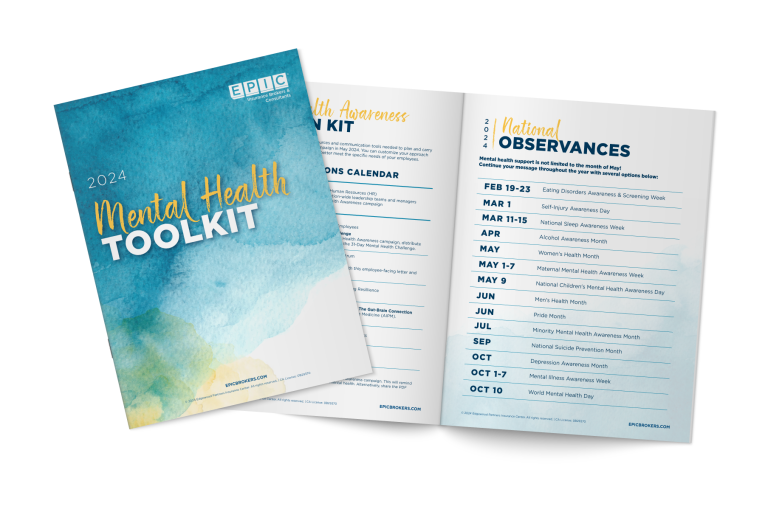Quick Facts
- Since 2012, employers with greater than 250 employees must annually report the aggregate cost of healthcare coverage on employee W-2s.
- The aggregate cost is the entire plan cost, including both the employer and employee contributions.
- Certain excepted benefits are not required to be included in the aggregate healthcare cost.
Background
It is the time of year when large employers need to include the cost of healthcare coverage in employee W-2s. The Affordable Care Act (ACA) requires employers to report the “aggregate cost” of certain types of employer-provided health coverage on an employee’s W-2. The reporting requirement does not affect the tax status of the benefits but was designed to assist in collecting the data necessary to administer various provisions of the ACA.
Requirement Delay Continues for Small Employers
The Internal Revenue Service (IRS) provided transition relief for small employers in 2012 and that guidance is still applicable. Per the guidance, the W-2 cost of healthcare reporting requirement continues to be delayed for employers who filed fewer than 250 W-2s in the previous tax year.
The guidance states: “until further guidance is issued, an employer is not subject to the reporting requirement for any calendar year if the employer was required to file fewer than 250 Forms W-2 for the preceding calendar year.”
Also, according to the IRS, any guidance that expands the reporting requirements will apply only to calendar years that start at least six months after the guidance is issued.
For the purpose of applying this transition relief, the W-2 count is determined without application of any entity aggregation rules for related employers. Consequently, related employers who may be considered under common control for other ACA purposes can be considered separately to determine whether they are subject to the W-2 reporting requirement.
What Must Be Reported?
The “aggregate cost” of coverage is the entire plan cost, including both the employer and employee contributions. Self-funded plans are generally allowed to utilize the method used to determine applicable Consolidated Omnibus Budget Reconciliation Act Coverage (COBRA) rates (without adding the 2% administration fee) to calculate the aggregate cost of a plan. The applicable cost must be calculated on a monthly basis based on the specific coverage (e.g., single or family) maintained by the employee.
Reportable employer-sponsored coverage includes coverage under any group health plan made available to employees which is excludable from the employee’s gross income under Section 106. However, certain benefits are specifically excluded from the reporting requirement.
Benefits not required to be included in the W-2 reporting are:
- Health Reimbursement Arrangements (HRAs).
- Stand-alone dental or vision coverage that meets the Health Insurance Portability and Accountability Act (HIPAA) definition of an “excepted benefit.”
- Coverage issued as a supplement to liability insurance.
- Contributions to Health Savings Accounts (HSAs).
- Workers’ compensation or similar insurance.
- Long-term care insurance.
- Liability insurance, credit-only insurance and automobile medical payment insurance.
- Coverage only for a specified disease or illness, hospital indemnity or other fixed indemnity insurance provided that such coverage is not coordinated with the employer’s other health plans.
Other Administrative Issues
IRS Notice 2012-9 includes guidance on several administrative issues:
- The W-2 requirement does not apply to coverage under a Section 125 health flexible spending arrangement (HFSA) if contributions occur only through employee salary reduction elections. However, if the employer contributes to an HFSA, the amount in excess of the employee’s contribution is reportable.
- The W-2 requirement does not apply to payments or reimbursements of health insurance premiums for a 2% owner of an S corporation who is required to include the premium payments in gross income.
- Employers are not required to include the cost of coverage under an employee assistance program (EAP), wellness program, or on-site medical clinic if the employer does not charge a premium for these types of coverage provided under COBRA coverage. However, if the employer charges a COBRA premium for any of these types of coverage, the cost of the plan must be included in the aggregate cost for all employees, not just those who have experienced a COBRA event.
- Employers may voluntarily include the cost of coverage under programs not required to be included under applicable interim relief, such as the cost of coverage under an HRA.
Notice 2012-9 also provides guidance on some administrative issues such as how to calculate the reportable amount if an employer is provided notice of events that occurred on or before December 31 (e.g., an employee providing an employer notice of a divorce that occurred during a prior calendar year, and how to calculate the reportable amount where coverage extends over the payroll period including December 31) after December 31.
Summary
Additional reporting details are provided in the IRS employer W-2 filing instructions and other IRS resources such as an IRS Question and Answer webpage and a chart describing which benefits are subject to the W-2 reporting requirement.
EPIC Employee Benefits Compliance Services
For further information on this or any other topics, please contact your EPIC consulting team.
Learn About Our Employee Benefits Compliance Services
EPIC offers this material for general information only. EPIC does not intend this material to be, nor may any person receiving this information construe or rely on this material as, tax or legal advice. The matters addressed in this document and any related discussions or correspondence should be reviewed and discussed with legal counsel prior to acting or relying on these materials.
DOWNLOADABLE RESOURCES
THE 2022 COMPLIANCE WEBINAR SERIES IS HERE!
Register for Our 2022 Employee Benefits Compliance Webinars
Sign up for our Compliance Matters Newsletter
You’ll receive our monthly newsletter, as well as special compliance alerts and invitations to our compliance webinars
Related Content
Products
Employee Benefits Consulting
Our dedicated EPIC benefits team is focused on delivering better outcomes – to both your benefits program ...
Products
Compliance
Our expert Compliance team provides comprehensive consulting services and in-depth education regarding the ...
Products
HR Technology Solutions
From advising startups on how to build a solid Human Resources (HR) infrastructure, to consulting with ...


